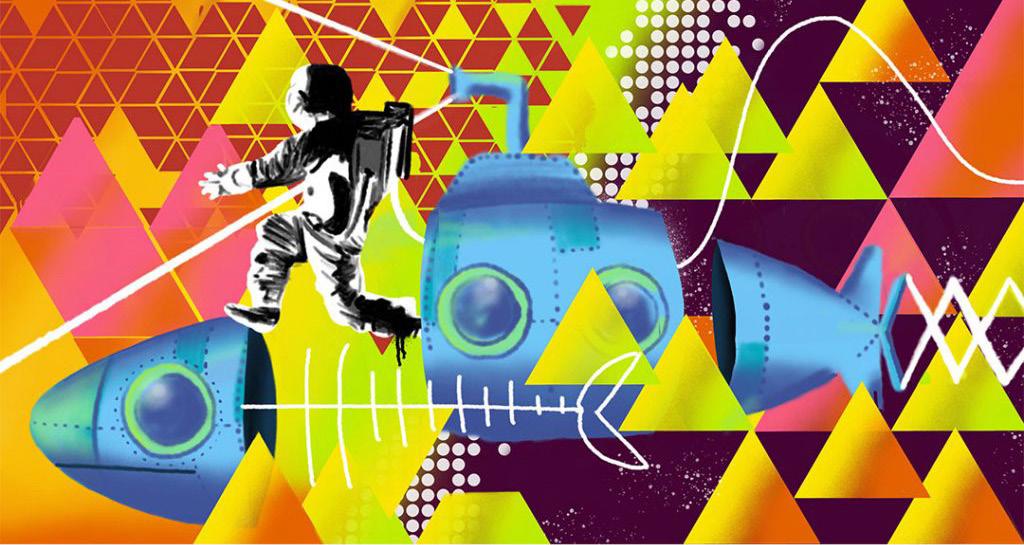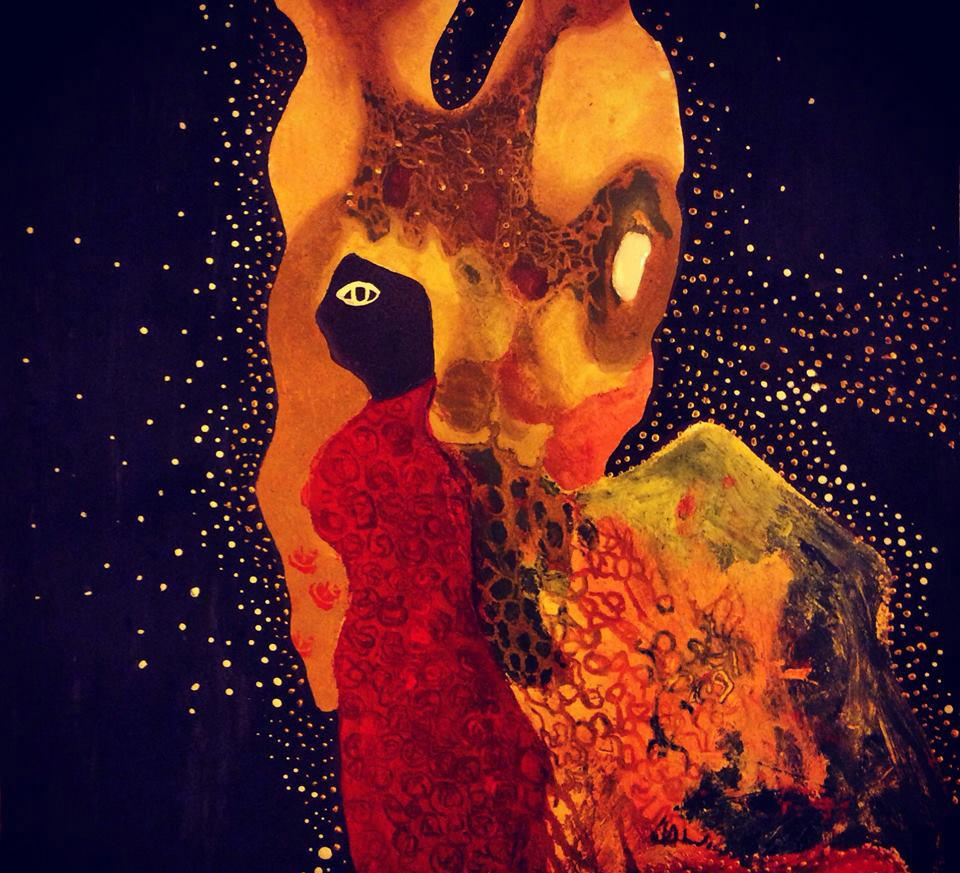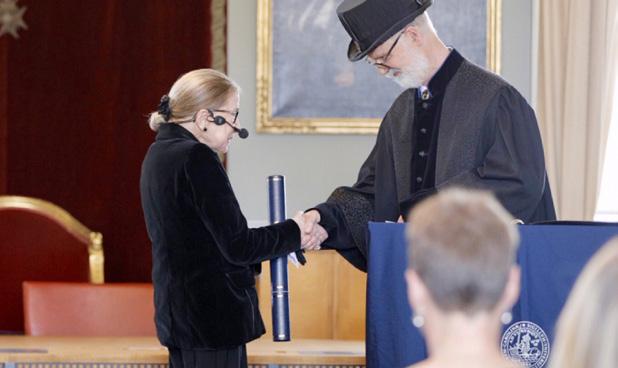
6 minute read
Book: My Maja: A Grandson’s Tribute
Book
About hope, optimism and perseverance when faced with adversity – My Maja: A Grandson’s Tribute by Dr Donald Grossnickle
By Peter Berlin
This is a book about resilience and the ability to adapt to challenges. Marie (Maja) Källgren arrived in America in 1922 as a single, cheerful 25-year-old. She came from an upper-class family in Sweden and could afford an upperclass ticket on the ship that brought her from Gothenburg to New York. Unlike her fellow passengers in steerage, she was allowed to skip the gruelling immigration process on Ellis Island and proceeded directly by train to Chicago. There she met a first-generation Swedish-American, Carl Oscar Wittenstrom, who was to become her husband. So far so good.
After she passed away in 1969, Grossnickle discovered in her daughter’s attic a trunk of the sturdy kind that emigrants from Sweden used to ship their personal belongings to the New World. The trunk contained a goldmine of biographical information about Maja’s life, including sadder episodes which she had withheld from her grandson during their many chats. These memorabilia served as an important inspiration for Grossnickle’s book.
The author learns that dark clouds began to pile up on her horizon. Her firstborn child died shortly after

birth. In 1929 the Great Depression hit America overnight, forcing her husband to eventually close his business. He died of a heart attack in 1932, leaving Maja alone to raise their three surviving children. As a widow and single mother, she found a nursing job and worked night shifts to sustain her family. Faced with so much adversity, she suffered from deep depression and was committed to an asylum. She recovered, only to attempt suicide a decade later. A stranger found her lying unconscious on the ground in a cemetery and had her brought to a hospital. Once again she recovered, found her inner strength and began entertaining her young grandson, the book’s author, with stories about the happy times in her life.
As a literary device, the author includes several letters he wrote to his grandmother long after she died. In one of the letters he reflects on the scarcity of published material about single, educated Swedish women emigrating to America.
My research failed to help me find Swedish immigration stories of professionals and well-educated women such as what I know about you. Your profile as a nurse coming from a rather wealthy family is not well described with details sharing stories of how you came and adjusted to life in America. […] Despite all my research I never really found any literature that describes an immigration story quite like yours.
Grossnickle seeks to ascribe heroic virtue to his grandmother’s resilience and document his admiration for her Swedish grit. In another letter to his grandmother, the author offers the following dedication: Well, dear Grandma, I will have to wait until our heavenly reunion to share more memories and share our face-to-face sweet love again. It is so clear that the memories, the traditions have not faded with time. Your memory is fully alive.
My Maja: A Grandson’s Tribute makes for a suspenseful and inspirational read. The book is 160 pages and independently published in July, 2020. It is available Dr Donald Grossnickle on Amazon.
Hemma hos
‘Let’s Colour Gothenburg’ Celebrates the City and Brings Jobs to Young People
By Kristi Robinson
From Gothenburg’s cultural center, Kulturhuset Blå Stället in Angered, to art centre Röda Sten Konsthall in Klippan, “Let’s Colour Gothenburg” is considered the world’s longest art trail, and it was created in preparation for Gothenburg’s upcoming 400th anniversary. Stretching for 21 km, parts of the city landscape have been transformed with vibrant street art. Building façades, pavements, pedestrian and bike tunnels, trash bins, and park benches have all become urban canvases for international and local artists invited to take part.
“Let’s Colour Gothenburg” was responsible for a number of art projects around the city, one of which was the international competition “Gothenburg Art 21”. This art competition had a bit of a twist. While aiming to unify different areas of the city with the winning artwork, the project had the unique motivation to provide jobs to local youth. Young people living in areas of Gothenburg with the lowest rates of employment were given the opportunity to train and work as professional painters. Rather than having the winning artists paint their murals, it was the responsibility of the trained young painters. It was only the two diamond level winners – Sweden’s Llefen Carrera and Isaac Barreda from France – who painted their own murals.
[Design]
Artist Christo Guelov’s ‘Lego’s Bridge’. Photo © Christo Guelov



One of the standout pieces from the competition was from Bulgariaborn, Madrid-based artist Christo Guelov. Guelov’s ‘Lego’s Bridge’ was chosen for its playfulness and high recognition factor. The local young painters turned the Älvsborg Bridge over the Göta River into Guelov’s concept of Lego’s Bridge. On building walls in Majorna the young painters skillfully manifested the creative visions of a Spanish artist who goes under the name Concerto Street Art, with his art piece “Calm Waters”, and that of Argentina’s Irene Lasivita. Without putting a gender on the subject, Lasivita’s mural titled “Gender Revolution” was described by the jury as “a magic painting with radiance of tolerance”. Further down the art trail in Gamlestaden, the work of Brazilian architect and visual artist Romulo Lass was painted in a pedestrian and bike tunnel. Young artists from Gothenburg together with youth from Spain painted Lass’ graphic piece “Astronauts in Love”, along with five other works in tunnels along the trail. This exchange, facilitated by “Youth Power 2020” and created by “Let’s Colour Gothenburg”, seeks to promote meeting and collaboration among young people through art.
As the city prepares to celebrate its 400th anniversary, the “Let’s Colour Gothenburg” project has brought colour and culture to the streets. More importantly, the project has nurtured the abilities of young people to create something they can be proud of – a legacy for the city and its youth.
Left: Mural by Charqui Punk in Hammarkullen. © Göteborg 2021 | Below: Diamond winner of Gothenburg Art 21: Llefen Carrera from Sweden with “Nature’s Dust”. Photo © Gothenburg Art 21 | Bottom: Gold winner of Gothenburg Art 21: Thaigo Mazza from Brazil with “We are nature”. Photo © Gothenburg Art 21 | Right: ‘Gender Revolution’ by Irene Lasivita. Photo © Göteborg 2021 | Bottom right: ‘Calm Waters’ by Concerto Street Art. Photo © Gothenburg Art 21 | Bottom page 22: ‘Astronauts in Love’ by Romulo Lass. Photo © Gothenburg Art 21



Hemma hos












